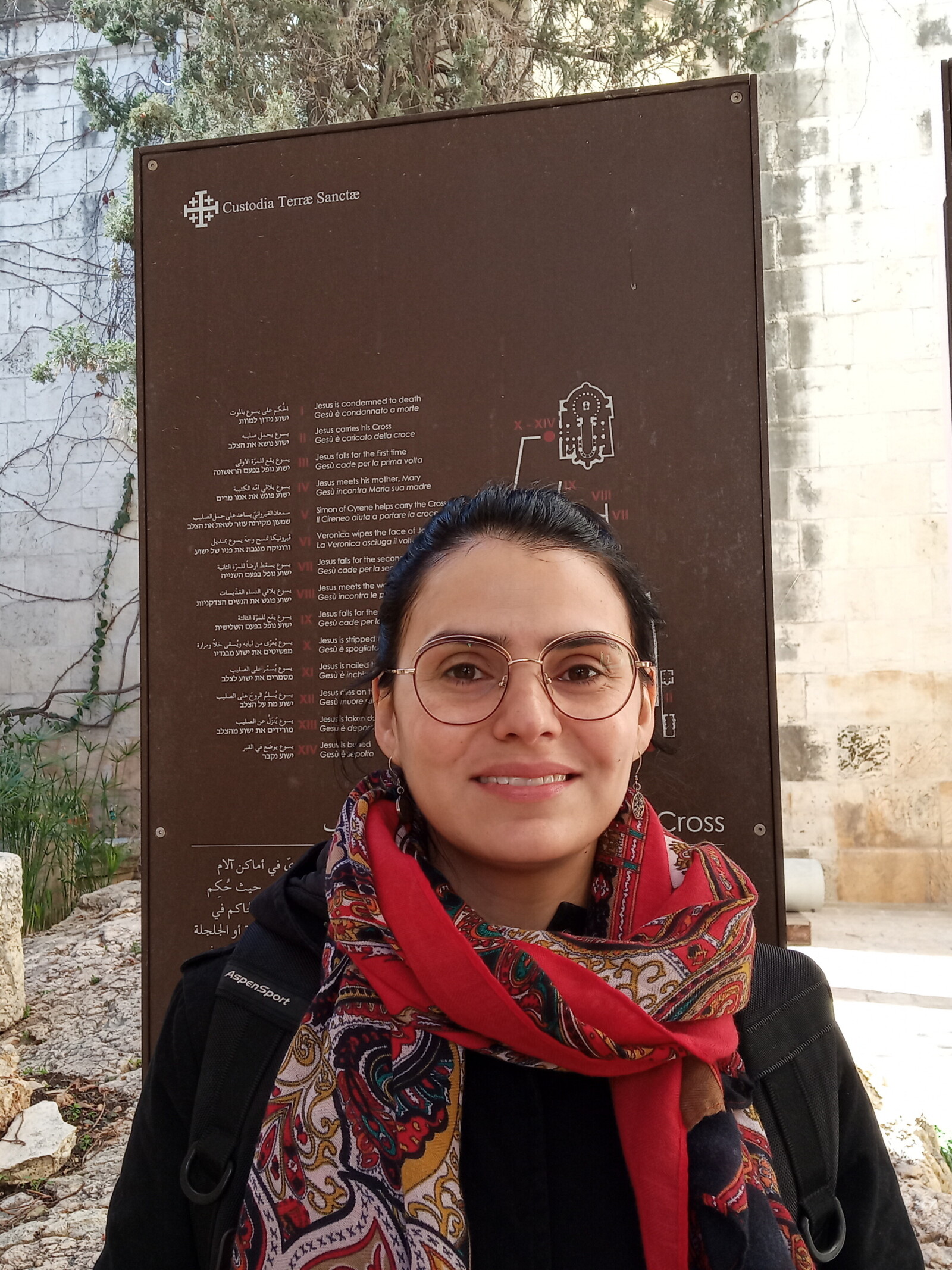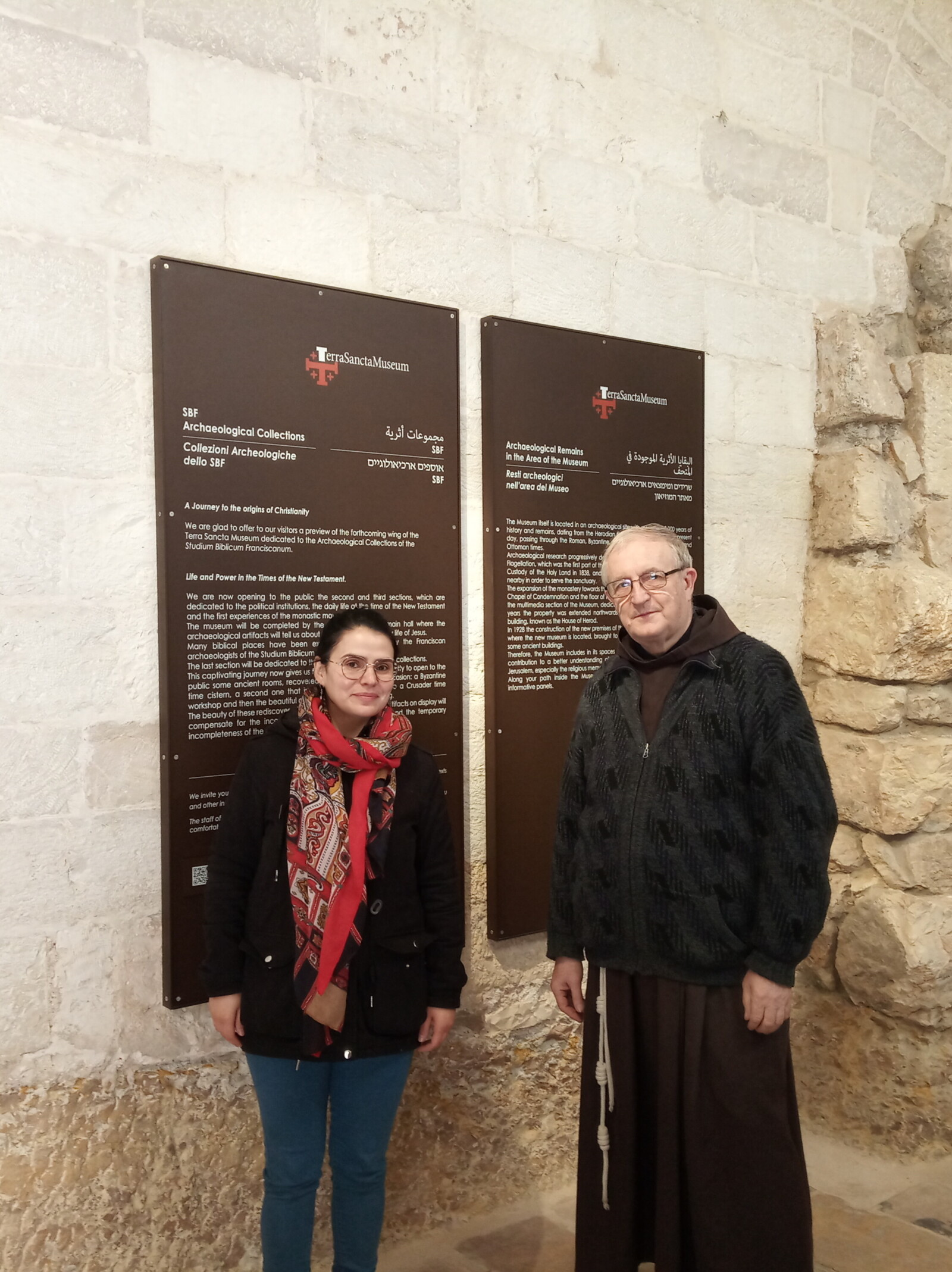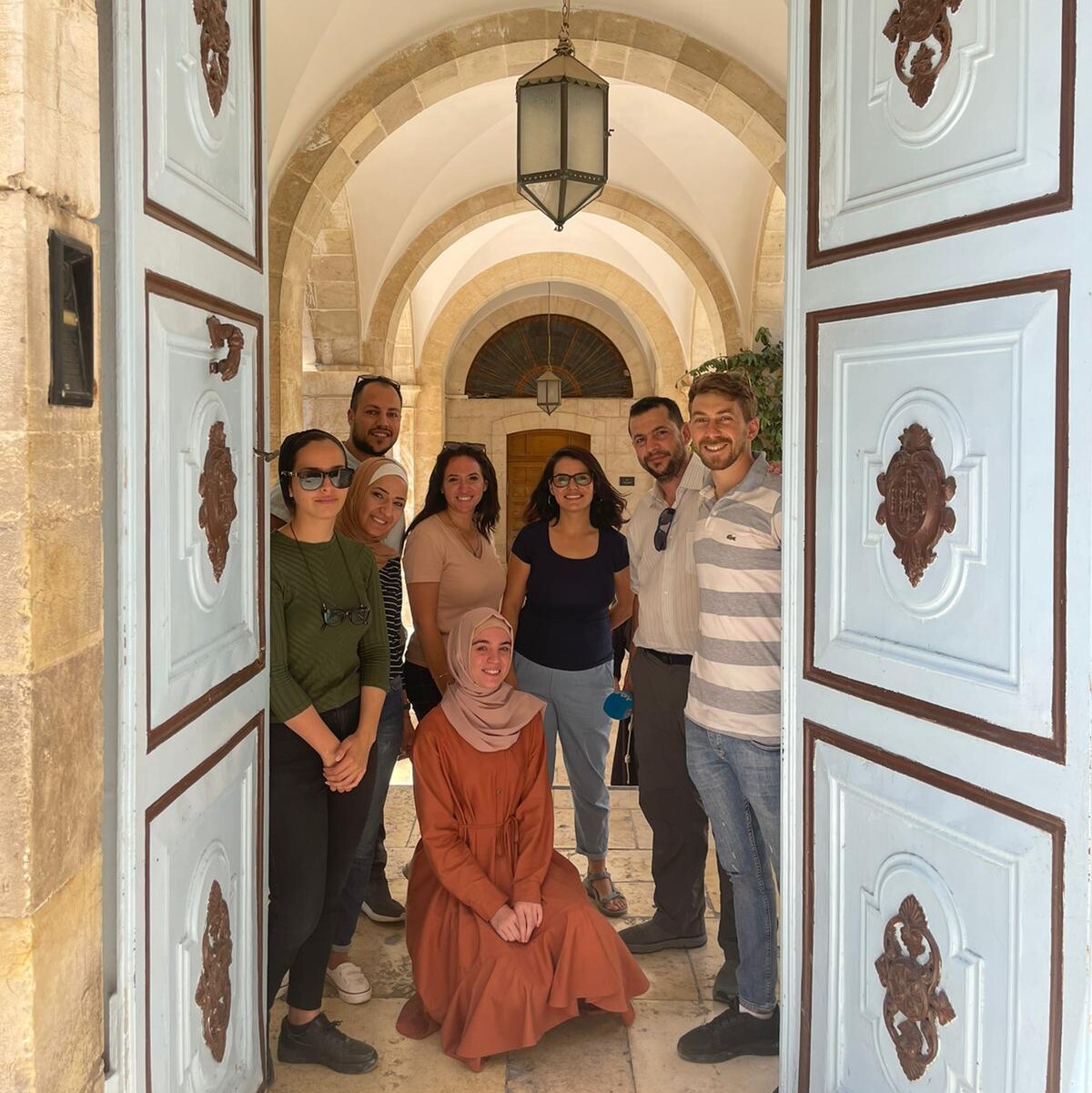Rawan Ghneim : “It is good to have a connection with the places in your city so you recognize and know your past.”
In February 2020, a project entirely consecrated to the Palestinian youth of East Jerusalem was launched by Pro Terra Santa (Pro TS) in cooperation with the Terra Sancta Museum and thanks to the support of the European Union. We met Rawan Ghneim, a Palestinian from the Old City of Jerusalem, in charge of relations with the partners for this project.

Can you briefly describe your background to us?
My name is Rawan Ghneim and I am a Palestinian from the Old City of Jerusalem. I started studying physical education and worked for six months in this field but, after this period, I decided to work for another field of activities and got engaged as a volunteer in Al-Saraya Center, a centre for community services located in the Old City of Jerusalem. There, I worked for a programme called “Children’s literature” (أدب الأطفال) that encouraged children to read and learn life skills through stories. After two months, the manager offered me a full-time position and I worked for seven years with them, finally becoming manager of this programme.
Then, I worked for two years in Ramallah for the Al-Mada Association for Art-Based Community Development as a project manager for the programme “For My Identity, I Sing”. And after this project ended, I became coordinator of the Palestine Cinema Days organized by Filmlab.
What attracted you to this experience with Pro TS?
Well, it was a new adventure for me, both new and familiar. Familiar because the job is about networking, something I had already been doing for a long time, and I already had lots of connections: with the Directorate of Education [1], schools, CBOs [2], NGOs [3], even with the people in the street because I’m from the Old-City of Jerusalem and I worked here for years. But, on the other hand, I had never worked for a museum before. So, I thought this job would be good and easy for me and at the same time challenging.
Actually, when Sara and Father Alliata [4] took me to the museum and showed me round, I had mixed feelings. It was the first time I entered this place and I felt like it was my responsibility to let people from Jerusalem know about it. I’m not usually interested in history, but with everything that is happening, with the stealing of our culture and our places, it meant something to me that people should know about this place and should know about their history. It has been a very emotional experience. As I told you, it was challenging and easy, beautiful and scary and I’m glad that I took the job.

What exactly does your job consist of?
My job is to create a network for the Terra Sancta Museum in Jerusalem with schools, CBOs, other museums and the local community. I also introduce this place to people who, like me before, are usually aware of the convent but not the museum inside its walls. It is important because the staff of the museum is mainly European, so it needs someone who knows the places, the people, the mentality and how to introduce them to this project.
Every week, I have one or two meetings and of course there is always a lot of correspondence to agree on things. But the meetings are not only to create a partnership. Our museum is not well known by the community yet, so there is always a fear of falling into a trap of normalization. Thus, after creating the connection, I have to build up a relationship based on trust.
We are targeting children, youth and local community groups in general, so this means schools but not only them: we want to reach these people wherever they are. I think that children deserve to learn about their history, the history of the city, in a proper, beautiful and entertaining way. It is nice to bring them to places where they can play and learn these things at the same time.
How do you create this relationship of trust?
Well, to begin with, I am a trustworthy person for them because they all know me from my previous jobs. They know my opinions and my commitments. But, of course, it is not enough and it takes some time. So, I talk to them about the museum, the people that work there and also the Pro TS organization, how they work and their previous projects. I try to bring them to the museum and meet people so they can connect and feel familiar with the place. Before they send their children, they have to be convinced that it is a good place for them. I also try to get their opinions and ask them for ideas so they can feel involved in the project.
Sometimes, it is a long process. With some people, it took us a year and several meetings to reach an agreement. Not because they do not want to work with us but because they have doubts and fears that if anything goes wrong, they will be accused of normalization by the local community.
At the Terra Sancta Museum, the story that is told is Christian history. But not every Palestinian is Christian. Is it a challenge to make Muslim Palestinians come to the museum and to show them the interest of this heritage?
Of course, not every Palestinian is Christian, but they’re all Palestinians. Palestine in general, but Jerusalem especially is special because it has so many cultures and religions. Even though they’re not Christians, they should know about this part of the history of the city. Jesus was also Palestinian! (laughs) And actually, it is also good for Christians to know about Muslim places. This is why we are having this relationship with the library and the Islamic museum in the Al-Aqsa compound [that the students also visit thanks to this programme, Ed,’s note].
I believe that both sides, Muslims and Christians, should know about each other, whether it is about religion, holy places, museums, … You know, we are one culture. We pray differently, we believe in things differently but it’s the same culture, the same language, the same difficult situation that we are living in under occupation. Christians or Muslims, it doesn’t matter.
We haven’t had a good relationship in the past few years. I think that the occupation had a role in this, separating us, using religion. On some levels it worked because nations are always affected by religions but we are all Palestinians, no matter what we believe in, and it is good to have this project to try to bring all Palestinians together.
Is there an institution that participates the most in this project?
There are three actually. The Lassalle school of Jerusalem, Al-Saraya Center and the Islamic museum on Al-Aqsa Compound are really willing to participate. The Lady Pilar school is also very interested, but only came recently because of the pandemic and all the difficulties related to it.

Do you want to add anything to conclude?
I really like the idea of this project: museum education, museum activities, it is new for us. I keep thinking that children should see this museum and people in Jerusalem should know about this place and should feel that this is our land. It is good to tell people: “This is your place, you can go in there, you can enjoy the place, you can get involved”. It is good to have a connection with the places in your city so you recognize and know your past. To be honest, we don’t control our future or our days now, the occupation control everything for us. So let’s get to know about our past so we can, maybe, in the future, take back our land.
👉 Click here to learn more about the project A community living museum for Palestinian Youth.
[1] The Governmental Office of the Ministry of Education for Palestinian public schools in Jerusalem (as no Palestinian ministry is authorized by the Israeli authority in Jerusalem).
[2] Community-Based Organization.
[3] Non-Governmental Organization.
[4] Sara Cibin, art historian and project manager at Pro Terra Santa, in charge of the programmme “A community living museum for Palestinian Youth”. Father Eugenio Alliata, archaeologist ((Studium Biblicum Franciscanum) and director of the archaeological section of the Terra Sancta Museum.



